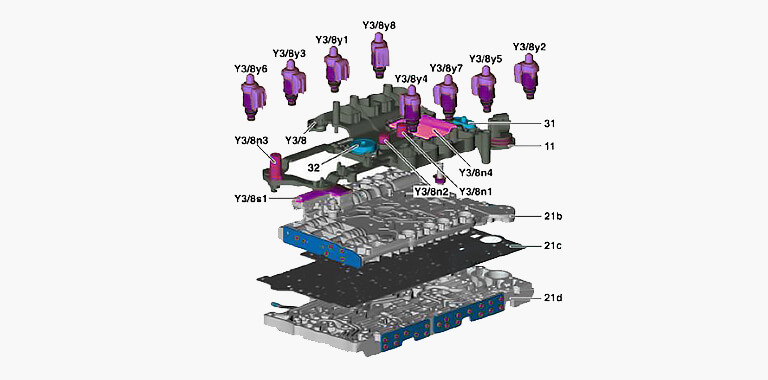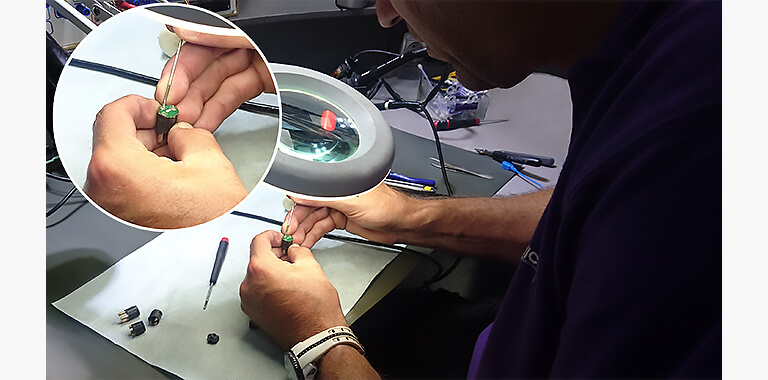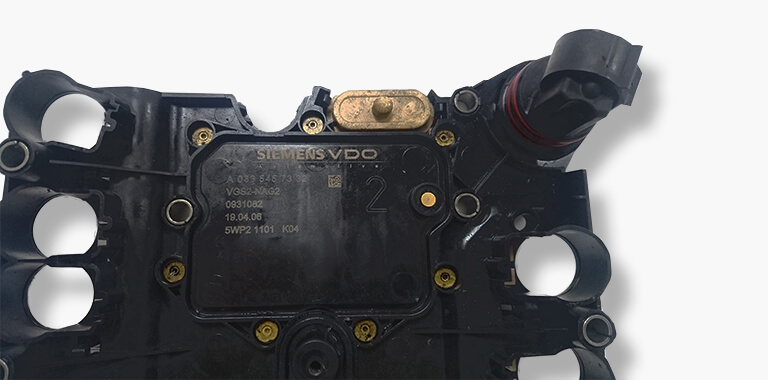Continental 7G-Tronic TCU (722.9)
When experts hear the term ‘7G-Tronic, they will probably think about Mercedes-Benz automatic transmission. For good reason, since this was the first gearbox for passenger cars that was carried out with 7 gears. The gearbox was introduced in 2003, in all Mercedes models with 8 cylinders.
However, knowing that Mercedes-Benz developed and introduced the 7G-tronic by itself, why was the name Continental used? Continental is the name of the manufacturer that produced the TCU for the 7G-Tronic. In this article we won’t discuss the entire gearbox, but merely the electronics that control the gearbox. That’s why we call it a Continental 7G-Tronic (722.9) TCU in this article.
What goes defective in many cases
It is important to know that the TCU is part of the mechatronics of this gearbox. Mechatronics are made up of mechanics (in this case the actuators and the labyrinth) and electronics (the sensors and the brain: together the TCU). ACtronics only developed a remanufacturing solution for the TCU, since almost all defects are related to the TCU. Therefore we’ll only discuss the TCU and not the mechanical part of the mechatronics.

There are many complaints about this TCU, most of them regarding the various TCU sensors of the 7G-Tronic. These do not only concern speed sensors Y3/8N1, Y3/8N2 and Y3/8N3, but also transmission range sensor Y3/8S1. Each sensor has its own specific error codes:
Y3/8N1 – Turbine speed sensor
- P0717 – The signal from component Y3/8n1 (Turbine speed sensor (VGS)) is not available
- P0718 – Component Y3/8n1 (Turbine speed sensor (VGS)) is defective
Y3/8N2 – Internal speed sensor
- P2200 – The signal from component Y3/8n2 (Internal speed sensor (VGS)) in not available
- P2201 – Component Y3/8n2 (Internal speed sensor (VGS)) is defective
- P2767 – The signal from component Y3/8n2 (Internal speed sensor (VGS)) in not available
- P2768 – Component Y3/8n2 (Internal speed sensor (VGS)) is defective
- Other internal speed sensor error codes: P2204, P2205, P2206, P2207.
Y3/8N3 – Output speed sensor
- P0722 – Output Speed Sensor No Signal
- P0723 – Output Speed Sensor (VGS) is defective
Y3/8S1 – Transmission range sensor
- P0705 – Transmission Range Sensor Circuit Malfunction
- P2716 – Pressure Control Solenoid “D” Electrical
These defects are not only recognisable by error codes, because you’ll always notice that the gearbox does not function like it should: it keeps changing gears, the clutch is sliding and the complete failure of the drive… so many things can go wrong. However, always try to ensure making a good diagnosis. In some cases the defect is related to mechanic parts, but it might as well be located in the TCU.
Extra diagnostic tip:
Check if there are iron fillings on the sensor rings in the gearbox. Such fillings might seriously disrupt the functioning of the speed sensors.
About error codes regarding Y3/8N4
Once in a while, there are defective TCUs with error codes regarding Y3/8N4. Unfortunately, we do not repair such TCUs and we recommend not sending it to us. This is because Y3/8N4 stands for the ceramic circuit board and once its components are defective, it is not viable to remanufacture the TCU from an economic point of view.
Remanufacturing: the process
Before we tell you about repairing, we’ll start at the beginning: the entry test. Before repairing a TCU, its known weak elements go through a comprehensive test. This test not only verifies the diagnosis but also examines other defects of the TCU. Important note: our remanufacturing method is solely aimed at the TCU and not at the labyrinth.
In case actual defects have been identified, the TCU is opened in order to locate the problem. We will not go into detail, but the sensors are connected to the ceramic circuit board by flat cables. You can imagine that opening the TCU and disassembling the sensors must be done by specialists. Only one wrong movement can cause irrepairable damage to the TCU. These flat cables are not separately available and also not replaceable like displays.
Luckily, our remanufacturing employees are very experienced in this field. Opening the TCU, disassembling the connections and repairing the defects is more of a routine job for them. Not just the connections to the sensors are checked and repaired, but defective sensors are also remanufactured or replaced by new ones. New ones are produced by ourselves, of which a few are even 3D printed(!). Because of that, our remanufactured sensors are high-quality and even better than the original. Whether remanufacturing a sensor is possible or not, is decided on the spot. Our remanufacturing employees follow standard steps in this fixed procedure, one of the reasons that our remanufacturing method turned out be error-free and reliable.

Furthermore, we do not only repair the found defects but check all weak components by way of precaution. Each sensor is always disconnected. This is exactly the difference between repairing and remanufacturing: after remanufacturing, the product is completely free of defects and weak components, often even more reliable than a new one.
After remanufacturing the TCU, of course we test it to examine how it functions. We use our own developed test setup for this test. Our test setup is equipped with a real gearbox and functioning shifting lever. Again, we check all weak components instead of only going through the found defects. The product only goes back to the customer once it has passed all tests.
The 7G-Tronic in detail
The 7G-Tronic was introduced in 5 different Mercedes-Benz models with V8: E500, S430, S500, CL500 and SL500. After that, the gearbox was also used for certain 6-cylinder diesel engines like cars with the 320 CDI engine. However, vehicles with V12 engines (S600, S65 AMG) kept driving with the older 5G-Tronic, since this gearbox can handle a torque up to 1079 Nm. The 7G-Tronic has a limit of ‘only’ 735 Nm, which is certainly not enough for stronger V12 engines.
The gearbox is able to skip gears while switching back. The systems also includes a lock-up: a permanent clutch behind the torque converter that ensures a 100% transmission when needed. This improves the acceleration. The gearbox housing is made of magnesium to reduce weight. Mercedes-Benz was the first remanufacturer to do this.
Remarkable fact:
The 7G-Tronic has 2 ‘reverse’ gears with different ratios. In the winter mode (comfort mode), the 7G-Tronic moves off both forwards and backwards in the second gear to maintain traction and a calm way of moving off in winter conditions.
The 7G-Tronic gear set consists of 3 planetary gear sets and 1 Ravigneaux gear set. For the ones who do not know what a Ravigneaux gear set is: see it as a planetary gear set onto a planetary gear set. (See this video on YouTube:
This double feature enables a lot more different gearbox ratios, in such way that 9 gears (7 forwards, 2 backwards) fit into a relatively small and compact gearbox.
There are in total three generations of this TCU, of which each had its improvements compared to its previous one. It is good to see that the manufacturer came to the conclusion that the sensors needed improvement. The defects that we write about in this article only occur with the 1st and 2nd generation. The TCU sensors of the 3rd generation were improved, leaving such complaints behind.

Disassembly of the TCU
Disassembling the TCU is too specific and complicated in order to briefly describe this. We therefore strongly recommend removing the TCU following the official disassembly instructions. But there is more to keep in mind:
Each TCU is provided with an unique SCN code which is specific for every car that the TCU comes from. One cannot easily exchange TCUs: the unit should first be ‘virginized’ after which it has to be provided with the SCN code that is related to the car. This can be done on the online platform of Mercedes-Benz. However, only when the conditions have been approved a new SCN coding is provided. In conclusion, remanufacturing a TCU is in most cases the most simple way to solve its problems.

 da
da de
de es
es fr
fr it
it nb
nb nl
nl pt
pt sv
sv fi
fi